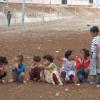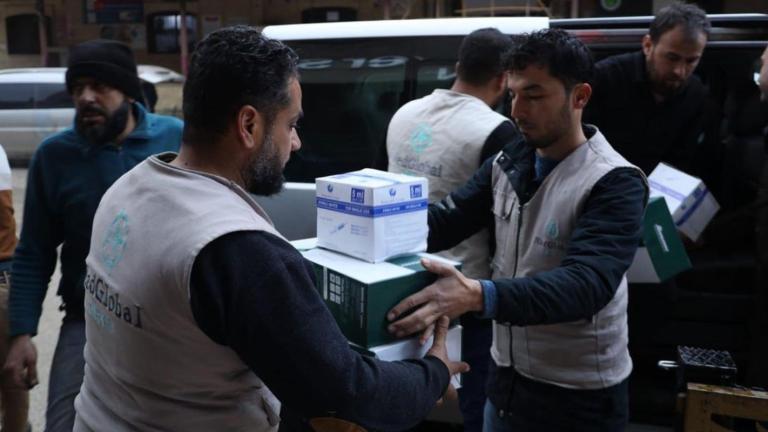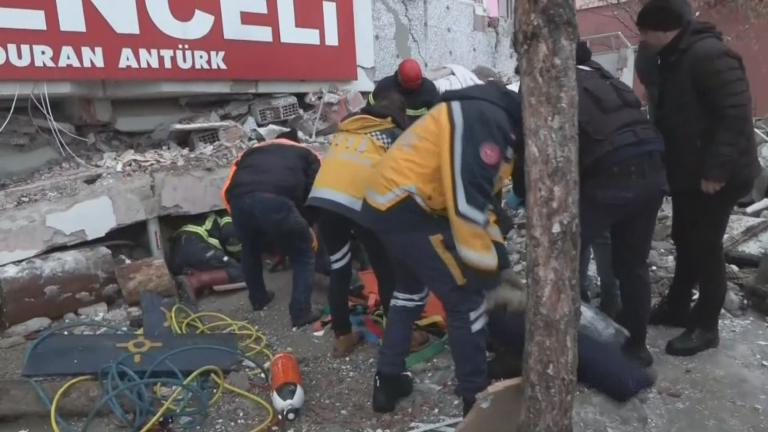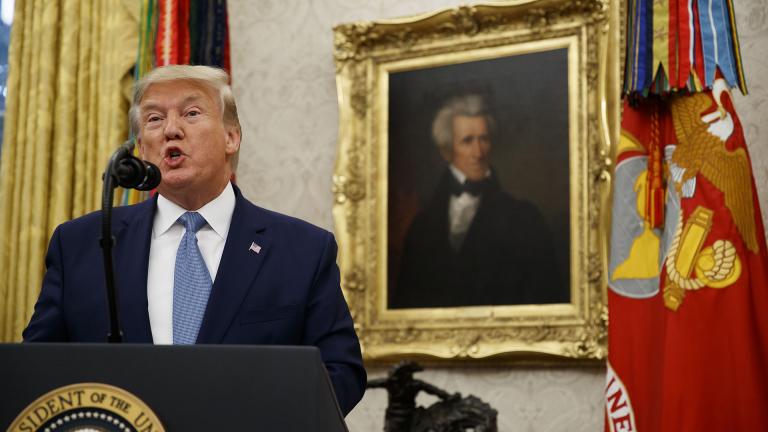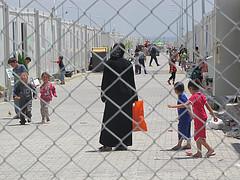 Escalating violence in Syria has led to over 15,000 being killed since the outbreak of the revolts in March 2011. While the bloodshed continues, tens of thousands of Syrians are seeking refuge with neighboring Turkey. While on an international reporting trip, I traveled with Ash-har to the southern province of Haytay. We met with dozens of Syrians who have been displaced and are now seeking haven in Turkish refugee camps.
Escalating violence in Syria has led to over 15,000 being killed since the outbreak of the revolts in March 2011. While the bloodshed continues, tens of thousands of Syrians are seeking refuge with neighboring Turkey. While on an international reporting trip, I traveled with Ash-har to the southern province of Haytay. We met with dozens of Syrians who have been displaced and are now seeking haven in Turkish refugee camps.
Security at these camps is tight and it’s difficult to get the government’s permission to visit them. We drove two and a half hours to the Kilis refugee camp, 500 meters from the border with Syria. Even in this almost surreal setting, Turkish hospitality prevailed. As we stood on the dusty road leading into the camp, waiting to hear whether or not we would be allowed inside, guards came over and kindly offered us tea! Fortunately we were able to enter the camps and speak with several different refugees. It was the most humbling experience of my life--speaking with people who had been driven from their homes, leaving friends and family behind, yet still willing to share their stories.
The last few moments at this camp will stay with me forever. Some of the refugees took us to speak with a woman who had just had her fifth child two weeks earlier, and had also recently been widowed. Her husband was killed trying to help other Syrian families cross the border to enter the camps. Due to cultural customs, the woman was not allowed to speak to or be seen by other men for 40 days. Ash-har and I entered her bunker, after she covered her face with a veil, since a male was present. I spoke to her via our female translator, as she held her 2-week-old infant, surrounded by her other children. The youngest didn’t quite seem to understand what was going on, but you could see in the faces of the older children that they understood their father was gone forever.
We struggled to maintain our composure as we left the interview. Just then, an elderly man invited us to his bunker for coffee. At the same time, the camp’s supervisor was telling us that our time was up. Even as other refugees pleaded with him to let us stay, we were ushered towards the exit. As we walked along the path back to the entrance, the same older gentleman came running after us with a pot of coffee in one hand, and three small cups in the other. Knowing we had just visited with the widow, he told us that it was a traditional mourning coffee, served at funerals, as he proceeded to pour a cup for me, my colleague Ash-har, and our Syrian translator. We gave him our heartfelt thanks and swigged it down in one gulp.
The time we had at the camp seemed to evaporate. There were so many people willing to tell their story to us, because they want it shared with the world. When reading the news, death tolls just become numbers and it’s easy to feel removed and detached from the plight of these people. But if you’ve heard anything about the Al-Houla massacre or many others like it…these are the faces of the victims.
View the slideshow below for more photos from the camp. And watch Chicago Tonight at 7:00 pm for Ash-har Quraishi’s story about a Chicago area doctor trying to assist Syrian refugees in the Kilis camp, and read his story here.




